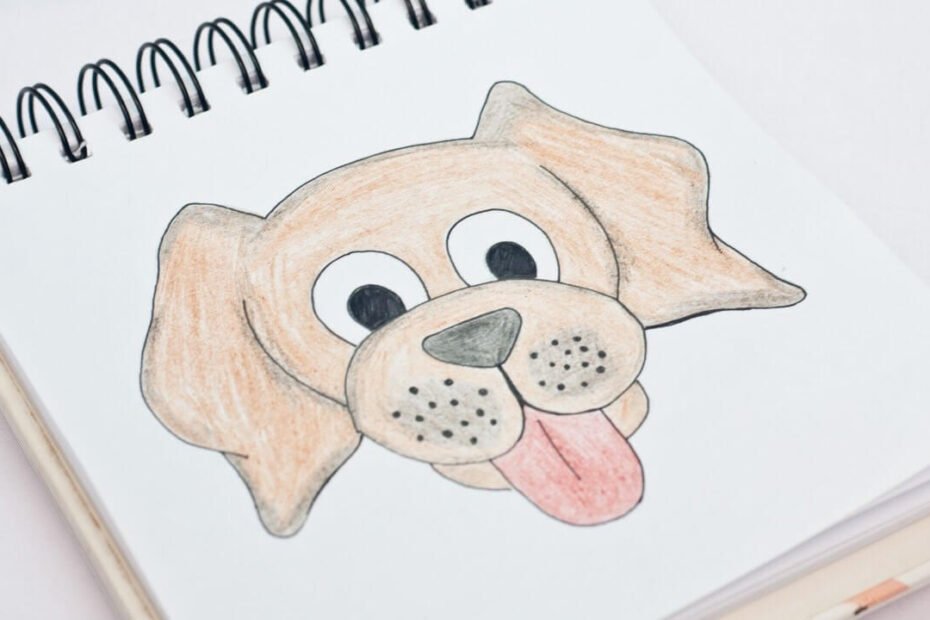There’s a reason dogs have earned the title of ‘man’s best friend’. Their expressive eyes, playful demeanor, and myriad breeds have long been a muse for artists worldwide. If you’ve gazed upon a lifelike canine portrait and pondered how to draw a dog with similar finesse, you’re about to embark on a rewarding journey. While capturing the essence of a dog on paper or screen might appear daunting, with the right tools and techniques, that soulful stare or playful wag can come to life under your hands.
Start with The Basics: Anatomy and Proportions
Every dog breed has its characteristics, but understanding basic canine anatomy is vital. Begin with a rudimentary skeletal structure, concentrating on the proportions of the head, spine curvature, and leg location. This core knowledge promotes precision in posture and movement, whether you’re sketching a majestic Doberman or a strong Bulldog. As you gain confidence, dig deeper into different breeds, noticing their distinct traits. The lush coat of a Golden Retriever will be noticeably different from the speckled appearance of a Dalmatian.
The world of drawing is vast and interconnected. For example, if you master the techniques of one animal, it can pave the way for other sketches. Just as you’re learning dog illustrations, understanding how to draw a cat’s face can offer insights. Felines and canines, despite their differences, share certain structural similarities, particularly in their eyes and their general facial anatomy. Leveraging the technique of one can often complement and enhance the other.
Tools to Elevate Your Dog Drawing Skills
While classic pencil and paper have their appeal, modern innovations such as digital tablets can enhance your artistic experience. Precision and flexibility that conventional tools cannot provide are provided by devices such as the XPPen. Its pressure-sensitive stylus can reproduce various drawing strokes, making fur detailing or eye shading easier. Many aspiring artists are moving to digital platforms because they can undo, layer, and experiment without the worry of damaging their work.
Capturing Emotion and Movement
Dogs are emotional creatures, from their enthusiastic leaps to their serious glances. Capturing these transitory feelings is an important component of creating a compelling dog drawing. Observe dogs in their natural habitat. When appropriately transferred onto your canvas, the joyous curve of a puppy’s back or the tranquil position of an elderly dog relaxing can be strong imagery. Using references, whether images or real-life observations, may make a huge difference in bringing your designs to life.
Practice and Patience: The Path to Pooch Perfection
Rome was not created in a day, and neither will your mastery of dog paintings. Consistent practice is essential. Sketch every day, experimenting with different breeds, positions, and expressions. You’ll notice minor changes over time, such as a more accurate representation of fur, a better-proportioned snout, or more expressive eyes. Maintain a portfolio of your progress; it not only serves as a testament to your progression as an artist, but it also serves as a constant motivator to polish and perfect your skill.
Exploring Various Artistic Styles
While realism frequently dominates the world of animal art, it’s worth mentioning that different techniques can provide a new perspective on sketching dogs. Abstract, pop art, or even caricature can provide a unique flavor to your canine works. Artists such as Pablo Picasso and George Rodrigue experimented with depicting dogs in styles that were far from realistic yet extremely evocative. Whether you enjoy the intricate complexities of hyperrealism or the fun distortions of caricature, stepping outside your comfort zone may be a delightful and enlightening experience. Furthermore, digital tools, particularly advanced ones like the XPPen, have capabilities that make changing between styles seamless.
The Cultural Significance of Dogs in Art
Dogs have played important roles in numerous civilizations’ art and literature throughout history. The portrayal of dogs has developed over time, reflecting society’s shifting relationship with these cherished creatures, from ancient Egyptian hieroglyphs to current graphic novels. Dogs represented devotion and honesty in Renaissance painting. Dogs are frequently shown as amusing or endearing sidekicks in modern pop culture, such as cartoons and animations. Understanding the cultural relevance and historical background of dogs in art not only broadens your education but also adds depth and context to your paintings.
Conclusion
Drawing is more than just a representation; it is an exploration of history, styles, and personal development. Remember that every artist offers their distinctive touch and viewpoint to their work as you walk the rewarding path of canine artwork. Your canine sculptures will not only portray the physical likeness but will also echo the everlasting essence and significance of our beloved pets with devotion, exploration, and the correct tools in hand. Accept the adventure and let every stroke reflect your love and enthusiasm for the canine world.
